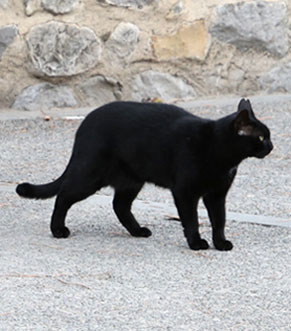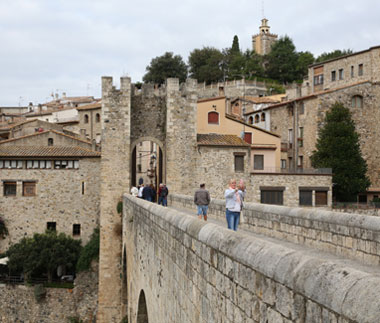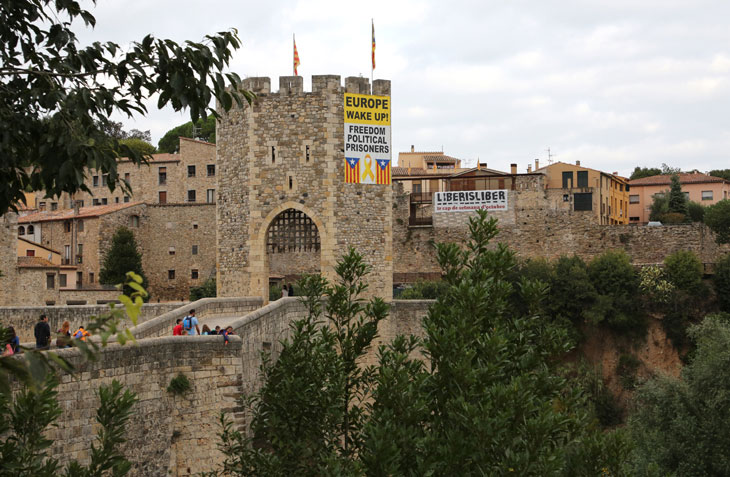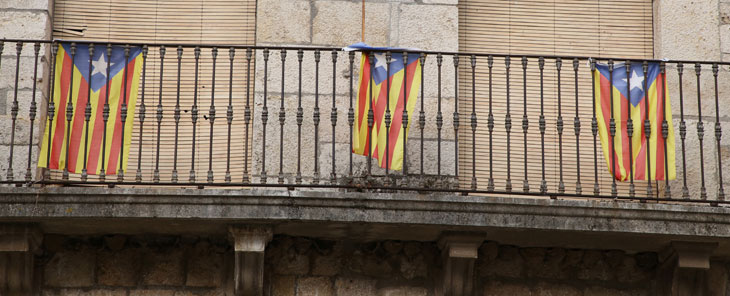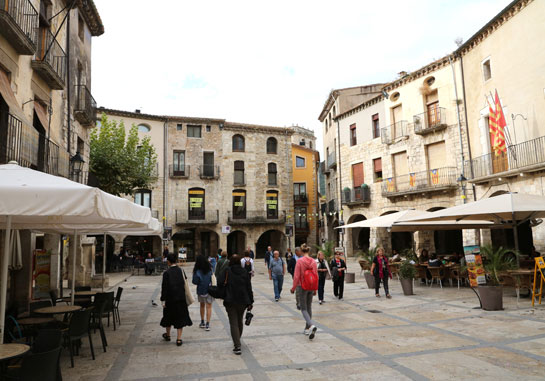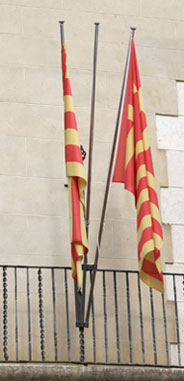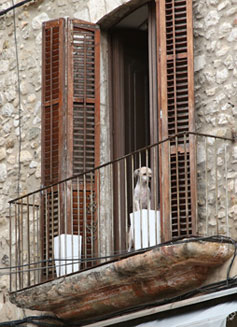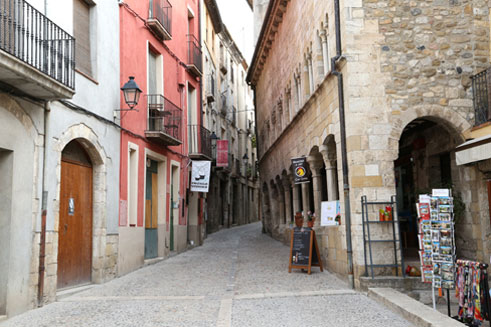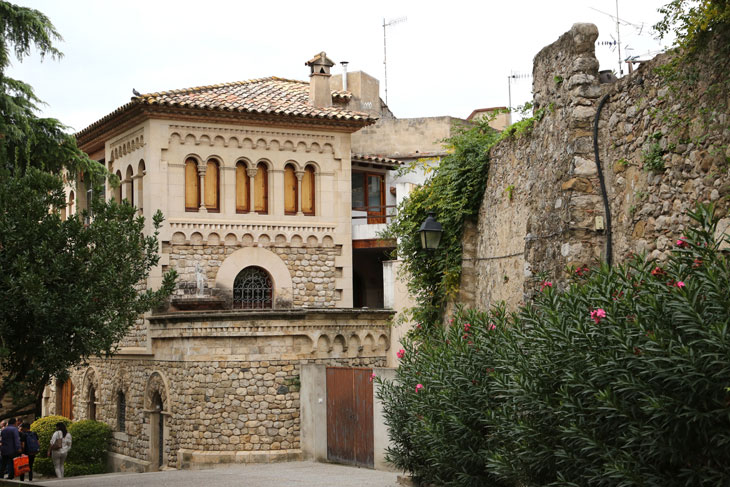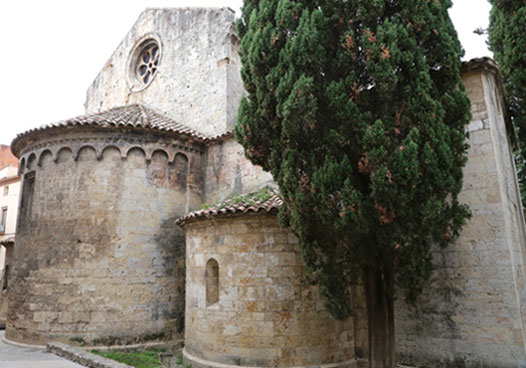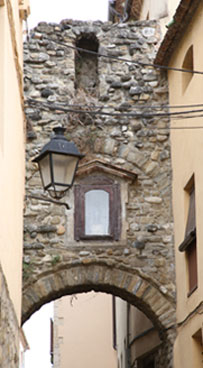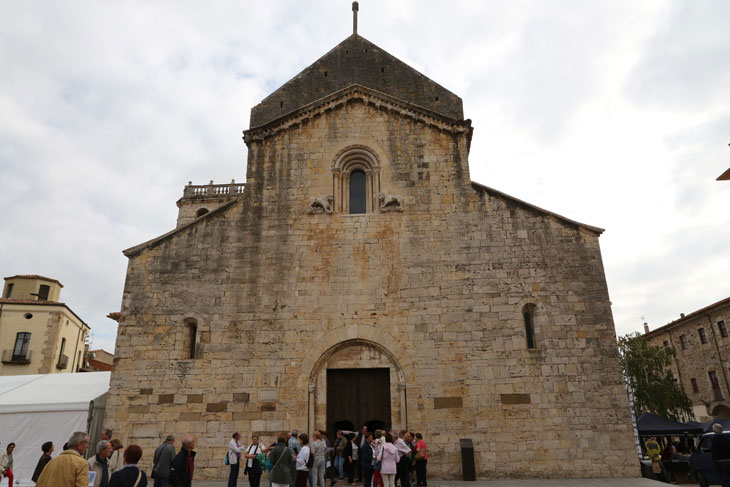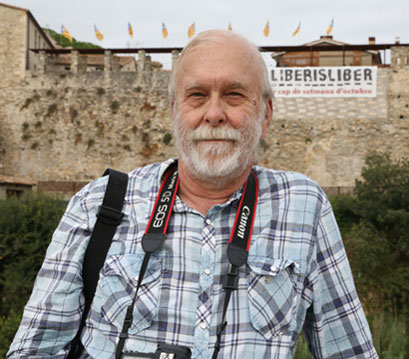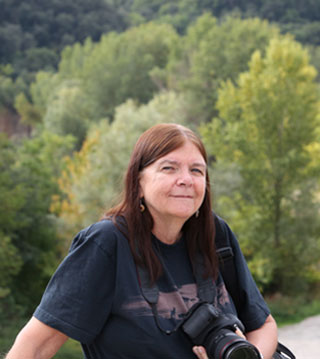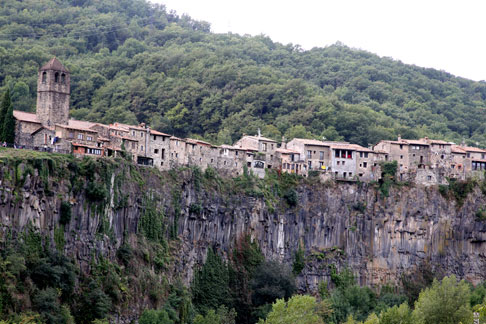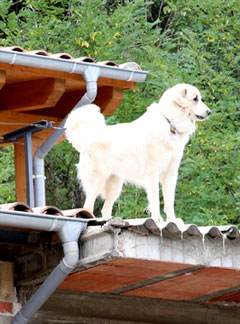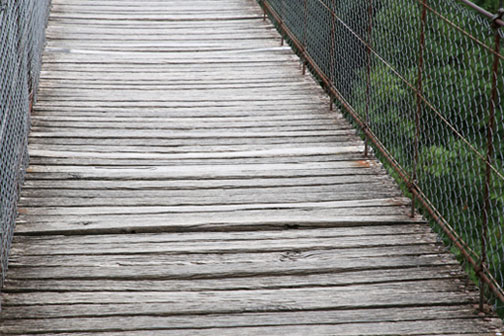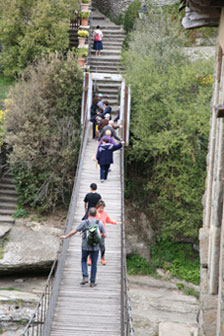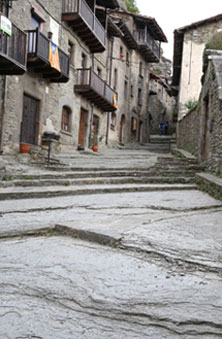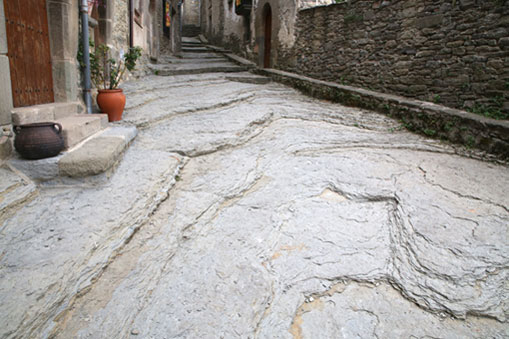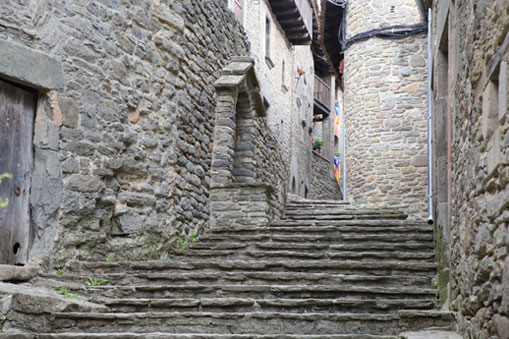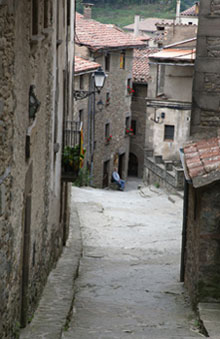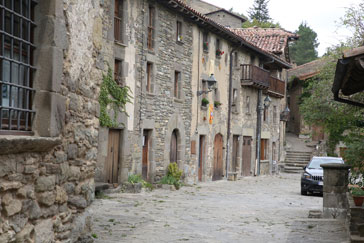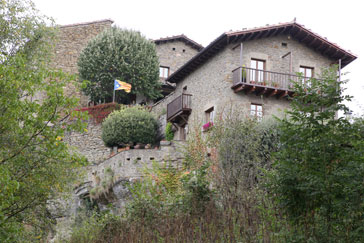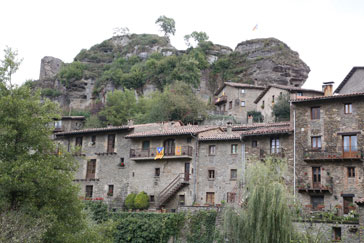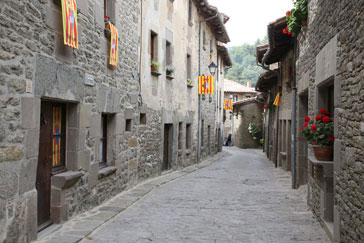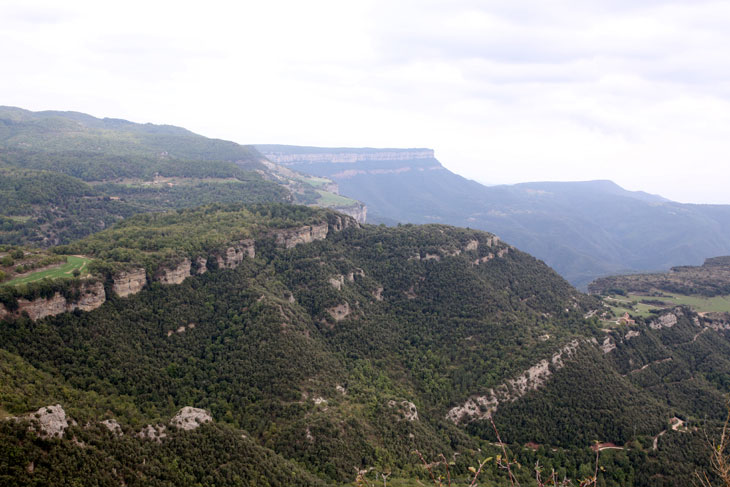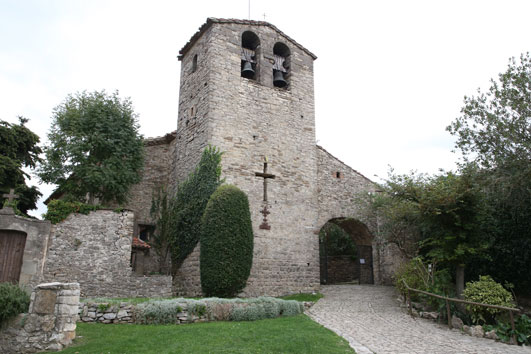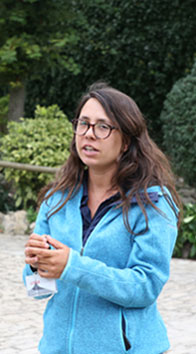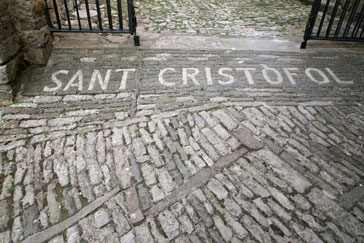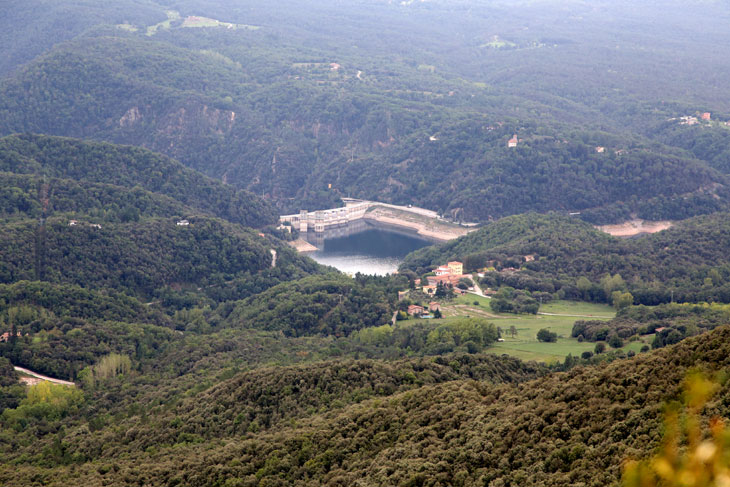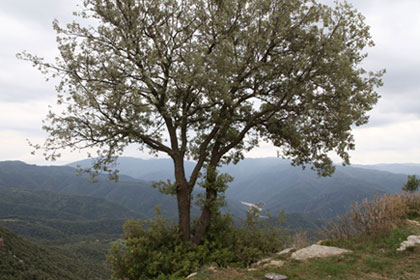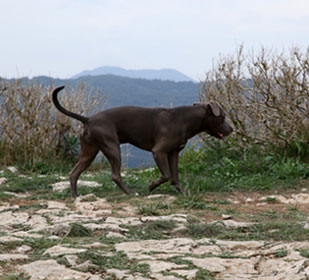Childhood Dreams
Day Tour of Three Medieval Villages
We have discovered that taking a day tour is a pretty good way to get to destinations that are not easily reached by
public transportation in countries where it would be unwise of us to attempt driving. There were many places we wanted
to see outside of Barcelona, but we finally settled on a tour of three medieval villages.
It was cloudy on the day of the tour, but at least it didn't rain. When we arrived at the designated pick-up point, we
discovered there were only five other people on the tour with us, and that number was soon reduced when two middle
aged American women decided they would rather join another tour so they could concentrate on shopping. That left us with
our feisty guide Marta, a quiet woman traveling alone, and two young Chinese women who preferred to only interact with
each other.
Marta loaded us into a small van and we were soon speeding through the early Sunday morning city streets. As we passed
a bullring, she proudly informed us that bullfights have long been banned in Barcelona. She also told us that it was not
her style to spend all day leading tourists here and there. She preferred to give a short talk explaining things of
interest in the area and then set her group loose to explore on its own. This worked out well because that was also our
preference.
Our first stop was the village of Besalu. You enter the town by walking across a very impressive bridge that was built
in the 12th Century.
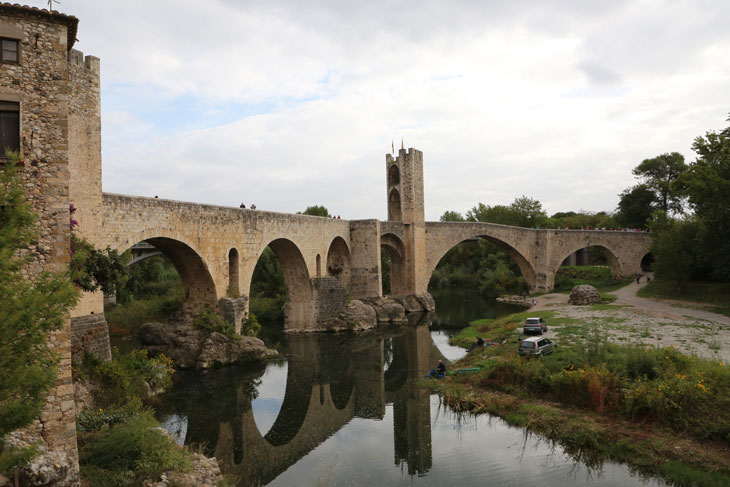
The town is home to many black cats. There were several hanging out by the parking lot and the bridge.
It was hard not to notice all the political signs and flags. I asked Marta what it all meant, but she said it
was too early in the day to talk about politics. We would discuss it later, she said.
She couldn't resist injecting a bit of politics into her presentation, however, when we reached a small square in
the town. She pointed out that if the Catalan flag and the city flag are flown, as they are here, it is customary
to also fly the flag of Spain in the center, but the mayor of Besalu choses to leave the center pole empty.
Visiting old villages like Besalu is also a popular activity for Spanish city dwellers. They bring their dogs and wander
the streets along with the tourists. Meanwhile, the dogs who call the village home sit on their balconies and yelp their
displeasure.
We happened upon many interesting buildings as we wandered the streets of the town.
One of the highlights is the church that belonged to the Monastery of Sant Pere which was founded in 977. Most of the
building dates from the 11th century.
We hated to leave, but Marta promised the next town, Rupit, was even better.
Back on the road, we got tangled up in a bicycle race and were forced to wait until all of the stragglers had
passed. Eventually we arrived at a scenic lookout where we stopped for a quick look at the town of Castellfollit
de la Roca. Perched high on a narrow cliff, the town actually has about 1000 inhabitants. Marta called it "Crazy
Castle Town." As we gazed across the gorge at the curious sight, an enthusiastic dog barked at us from a nearby
roof.
When we finally arrived at the village of Rupit, we were horrified to learn that this rickety suspension bridge
connects two sections of the town and that Marta expected us to walk across it. She gleefully announced that only 10
people are supposed to be on the bridge at a time and then plunged ahead (although there were definitely more than 10
people already on the bridge). We took a deep breath, and followed her lead.
The town also presents other pedestrian challenges such as this very steep narrow street paved with uneven stone
slabs and steps. I took on the challenge, but Walt chose to wait at the bottom. That's him in the second row of
pictures on the right.
I was amazed to find several cars in front of the houses at the top of the hill. They obviously had not driven up the
same street I had climbed.
I found myself wondering what it would be like to live in a town like Rupit. All the houses seemed so closed up, and,
once again, flags were displayed in abundance.
We grabbed a quick slice of burnt pizza and a cup of coffee in a small cafe. When you're traveling, you can't expect
all the meals you consume to be culinary masterpieces.
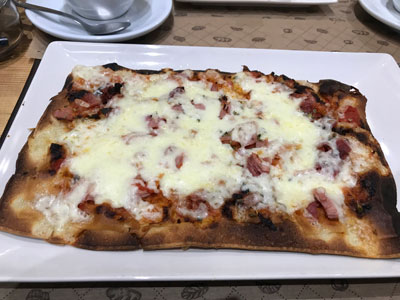
Then we piled back in the van and carried on. All signs of civilization quickly disappeared, and we found ourselves
hurtling through a forest on a steep one lane road.
I wondered what would happen if a car appeared traveling in the other direction, but we seemed to be the only
travelers on the road, and it was, apparently, time to talk politics. Marta embarked on a impassioned presentation
regarding the Catalan Independence Movement. It seems that back in the fall of 2016, the Catalan president held
a referendum on independence despite the protests of the Spanish government which said that such a referendum would be
illegal. When the referendum was held anyway, the Spanish government attempted to shut down polling places and voting
web sites. Violent protests ensued. In the end, the separatists declared victory because 90% of voters supported
independence (although voter turnout was only 43%) and they declared independence from Spain. In response, the Spanish
government invoked the terms of the Spanish constitution, dismissed the Catalan government, and imposed direct rule on
the region.
Twelve government leaders were tried by the Supreme Court of Spain for crimes like rebellion, sedition, misuse of
public funds and disobedience, and the verdicts were to be announced within the next week or so. It was likely that they
would receive prison sentences and fines so protests were amping up and a general strike was being planned for the near
future.
"How did we feel about the Spanish government arresting legally elected government officials?" Marta asked although it
was obvious that she didn't expect an answer.
The van crested a final hill, and we stopped in at a scenic lookout just outside the town of Cingles de Tavertet.
This is a picture of the road we had just traversed.
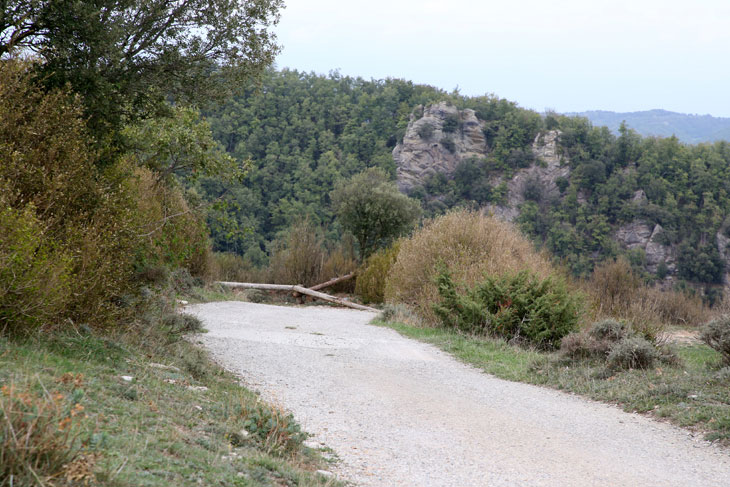
This is the view from the lookout.
The town itself was very small. We wandered by the old church and were surprised to learn that it housed a small
Black Madonna statue. It was much too dark to take a picture inside, but seeing the statue felt special because I was
the only person in the church.
The woman in the picture on the right below is our passionate guide Marta.
We enjoyed another scenic view of the valley on the other side of the town, and then it was time to return to
Barcelona.
It had been a long day during which we had learned many things. There was a lot to think about, so the ride back to
town was mostly silent.


